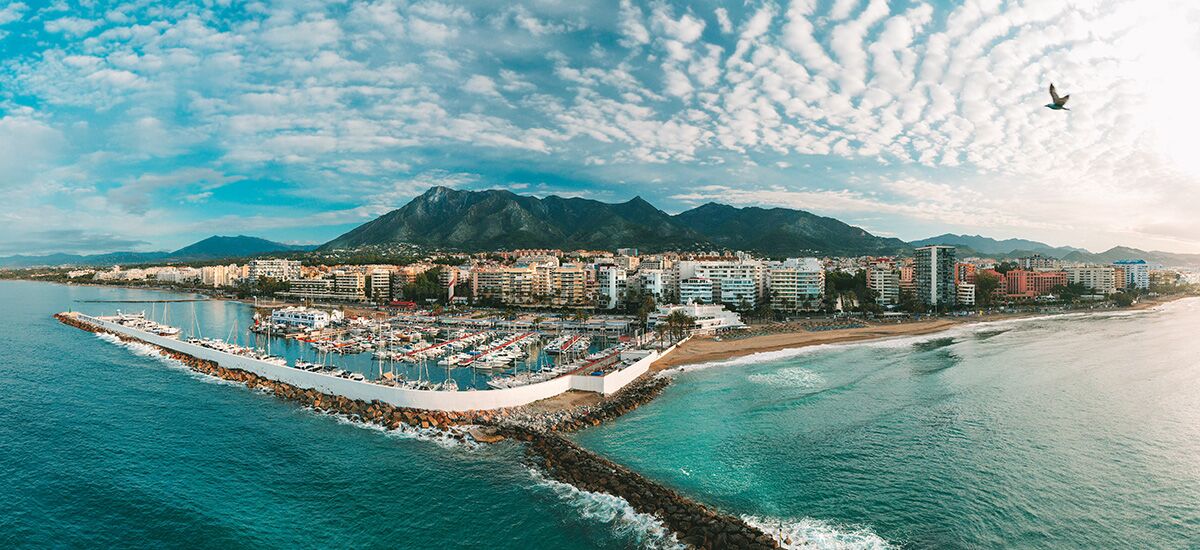Marbella’s own water treatment station is receiving a 35 million euro investment, with improvements already underway.

The rains that graced the plains over the Easter holidays have left Marbella locals with a collective sigh of relief. Snow fell on Málaga’s mountain tops, as delighting skiers and snowboarders alike hit the slopes in Sierra Nevada for a Semana Santa to remember. Along the coast temperatures dipped, dropping below 10°C in Marbella and elevated winds carried the much-needed rain filled clouds inland and across the coastline. More rain fell after Easter, which was comforting news alongside the planned works for water supply improvements by the regional government for not only Marbella, but the whole of Andalucía.
It’s not often you live in a part of the world that appreciates rainy weather as much as we do here on the Costa del Sol, but as that famous saying goes, you always want what you don’t have. The scarcity of gloomy skies throughout this winter left a lot of people concerned for the future of Marbella’s water supply, though secretly everyone did enjoy making the most of the holiday-grade weather (we’re only human after all).
Unfortunately, the lack of rainfall since 2023 led to certain municipalities having to implement water restrictions, affecting 250,000 residents across the Málaga province. With over 340 days of sunshine annually, Marbella’s fair weather is what makes it such a great place to live, but on balance the reservoirs that supply these areas rely on a certain amount of precipitation throughout the “rainy season” (November to March) in order to maintain adequate water levels.
Since Easter, Marbella’s own reservoir: Embalse de La Concepción, has as of today April 10 2024, been filled to 68.5% capacity, with water levels still climbing. On Easter Sunday March 31, the reservoir was recorded at 47% capacity, and just two days later by April 1, this had spiked to 56.6%.
In other good news, the Junta de Andalucía (the province’s regional government), has recently green-lighted an investment valued at 35 million euros, proposed by Acosol (the publicly owned water management company), to extend the water desalination station in Marbella, increasing its water supply to 4,300 litres per second, which as a comparison is 2,800 litres more per second than what is used on average in Málaga city.
This project is predicted to satisfy the needs of a population of around 2 million people, with the works estimated to take around twenty months to complete. Already improvements are underway at the Desalination Plant at the Verde water treatment station in Marbella, which amazingly is currently supplying 50% of Costa del Sol’s drinking water, from Torremolinos to Manilva. From this Summer onwards the Junta de Andalucía is to add a further 8 cubic hectometres to its annual capacity through a combination of updating the facility and adding further supporting plants to drive supply.
In addition, at least 36 initiatives are being explored across Málaga, including the re-opening of old wells, desalination of the Guadalhorce reservoir, damming of the Guadiaro river, installation of up to eighty Boreal Light’s solar powered reverse osmosis desalination units and the reclaiming of Málaga city’s wastewater from the treatment plant in Axarquia. 42% of Andalucía’s total public works have been dedicated to water management, and since 2019, a total investment of around €400m has been utilised to address these tasks.
These combined strategies will resolve any water supply concerns, ensuring Marbella remains a good investment for homeowners now and in the future, and keeping Málaga city amongst the top rankings in the world as one of the best places to live.
Sources:
Marbella Property Lawyers: “How Marbella is Solving its Water Crisis”
Sur in English: “Marbella water treatment plant improvements will allow it to meet the needs of two million people”
Source: vandenboom.es/
